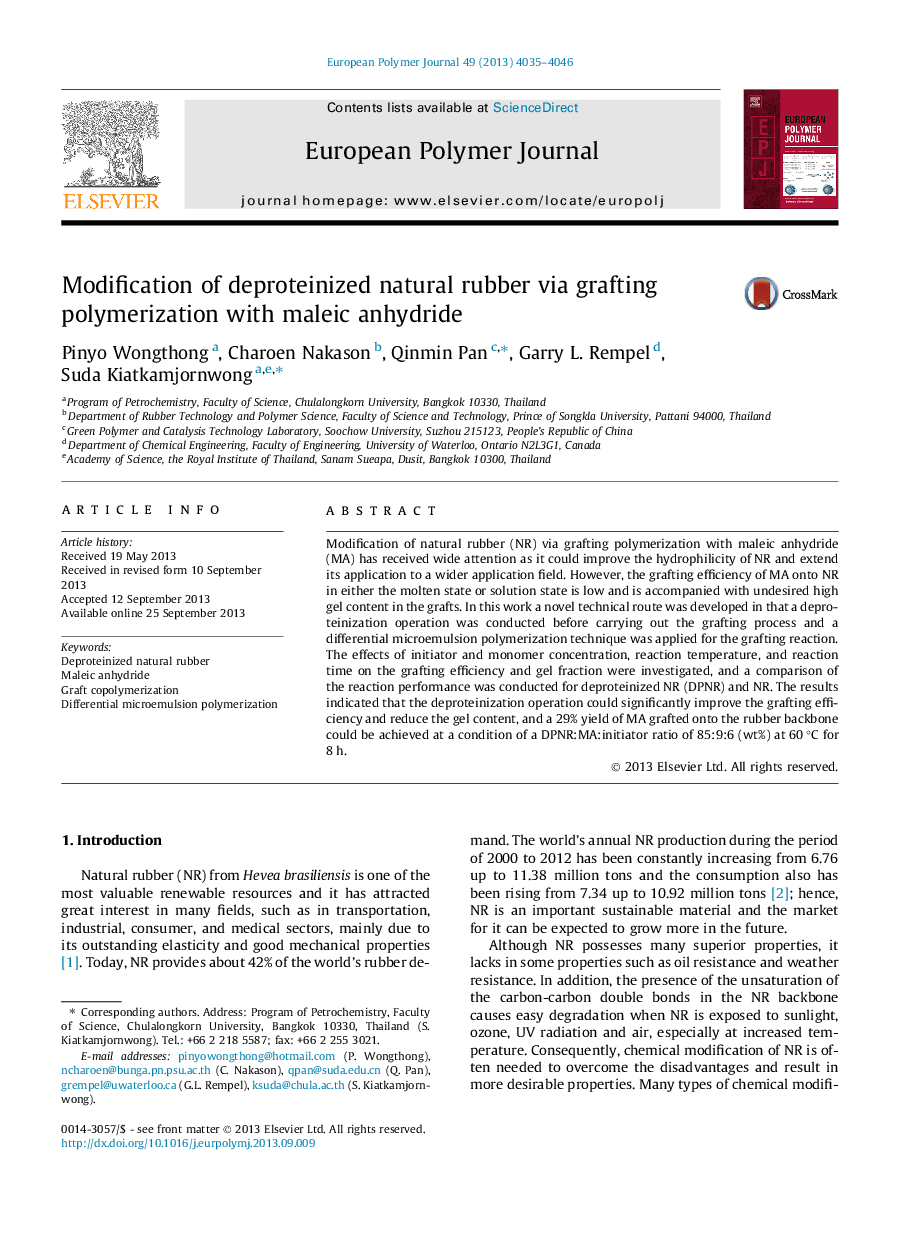| Article ID | Journal | Published Year | Pages | File Type |
|---|---|---|---|---|
| 1401948 | European Polymer Journal | 2013 | 12 Pages |
•Modification of DPNR via grafting with MA was prepared by DMP.•Protein removal of NR improved grafting efficiency and reduced gel content.•DPNR is a preferred substrate for grafting with MA.•Only one MA molecule was grafted from one isoprene unit.•DMP gives higher GE and lower gel content than conventional emulsion polymerization.
Modification of natural rubber (NR) via grafting polymerization with maleic anhydride (MA) has received wide attention as it could improve the hydrophilicity of NR and extend its application to a wider application field. However, the grafting efficiency of MA onto NR in either the molten state or solution state is low and is accompanied with undesired high gel content in the grafts. In this work a novel technical route was developed in that a deproteinization operation was conducted before carrying out the grafting process and a differential microemulsion polymerization technique was applied for the grafting reaction. The effects of initiator and monomer concentration, reaction temperature, and reaction time on the grafting efficiency and gel fraction were investigated, and a comparison of the reaction performance was conducted for deproteinized NR (DPNR) and NR. The results indicated that the deproteinization operation could significantly improve the grafting efficiency and reduce the gel content, and a 29% yield of MA grafted onto the rubber backbone could be achieved at a condition of a DPNR:MA:initiator ratio of 85:9:6 (wt%) at 60 °C for 8 h.
Graphical abstractFigure optionsDownload full-size imageDownload as PowerPoint slide
